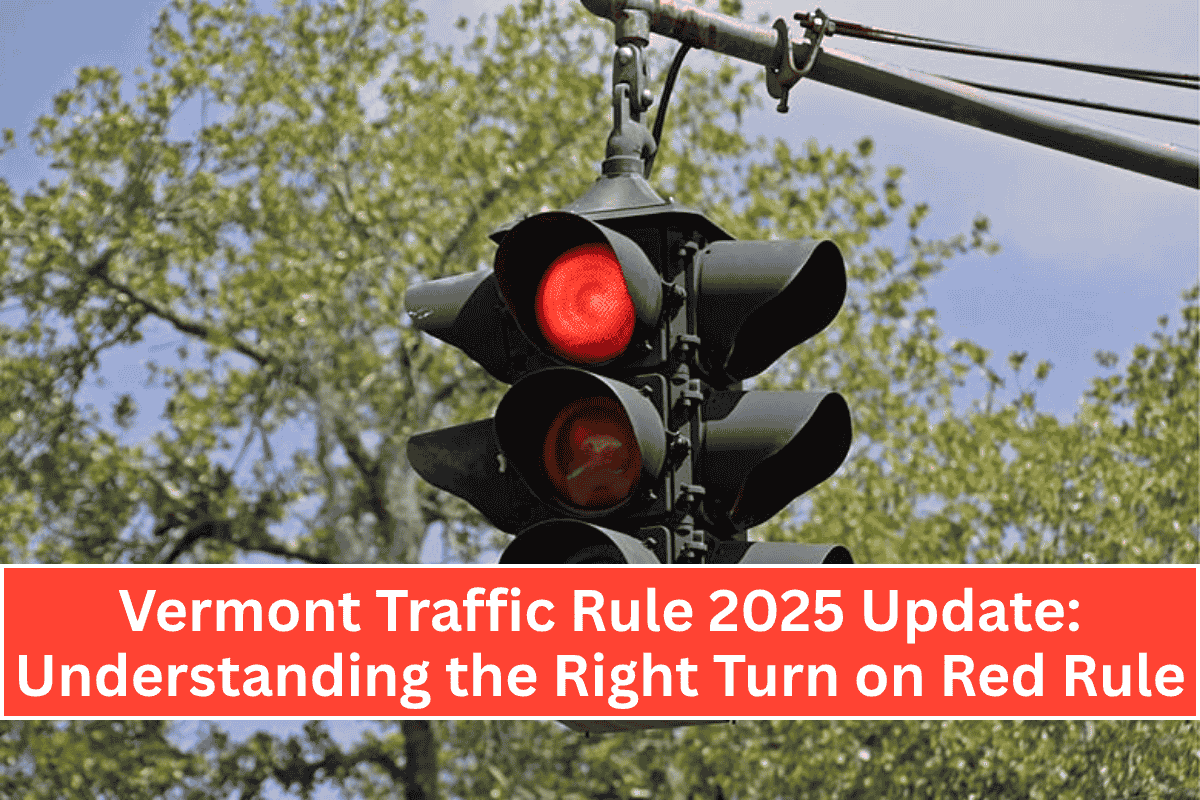Vermont’s traffic laws, especially those related to traffic signals, are designed to keep the roads safe and ensure smooth traffic flow. One important update is the rule about making a right turn on red when a steady red signal is shown.
This rule allows drivers to turn right at intersections even when the light is red, under certain conditions. Let’s take a closer look at the updated rules to better understand how this works.
What Does a Green Light Mean for Drivers?
A green signal means that vehicles can proceed, but with a few conditions:
Green Circular Signal: If you see a green light, you can go straight, turn left, or turn right, unless there’s a sign prohibiting these turns. However, if you’re turning, always remember to yield to other vehicles and pedestrians who may already be using the intersection.
Green Arrow: A green arrow indicates that you can only move in the direction of the arrow. If the arrow points right, you can turn right, but make sure to yield to pedestrians crossing the road.
Pedestrians facing a green signal can cross the street, but not when the signal is a turning arrow (meaning it’s only for turning vehicles).
What Does a Yellow Signal Mean?
A yellow signal serves as a warning that the light is about to turn red. Here’s how it affects both vehicles and pedestrians:
Yellow Light for Vehicles: If you’re driving and you see a yellow light, be ready to stop, as the green light will soon change to red. Do not enter the intersection when the light turns yellow unless you’re too close to stop safely.
Yellow Light for Pedestrians: If you’re walking and you see a yellow signal, it means you don’t have enough time to cross before the light turns red. Do not start crossing the road.
What Does a Red Light Mean for Drivers?
A red signal requires vehicles to stop completely. Here’s what you should know about the red light rule:
Steady Red Light: If you face a red circular signal, you must stop at the marked line or before entering the crosswalk. But there’s an exception when you can turn right.
Right Turn on Red: In Vermont, drivers can turn right at a red light, but only if there is no sign prohibiting it. You must stop first, then yield to pedestrians and other traffic before making your turn.
Red Arrow: If there is a red arrow, you cannot turn in the direction of the arrow, unless a sign specifically allows it.
Pedestrian Rules at Red Lights
Red Light for Pedestrians: If you’re walking and the signal shows a red light, do not enter the roadway. Wait until the signal changes.
Other Rules for Traffic Signals Outside Intersections
In Vermont, if traffic control signals are placed away from an intersection, these same rules still apply. Drivers must stop at a sign or marking indicating where to stop, or if no marking is present, stop at the signal itself.
Vermont’s traffic rules, especially around the right turn on red, are designed to keep drivers and pedestrians safe. Remember that when you face a red light, you can turn right only if there’s no sign prohibiting it, and you must always stop first.
Yield to pedestrians and make sure the intersection is clear before making your move. Understanding these simple rules helps prevent accidents and keeps traffic flowing smoothly for everyone.












